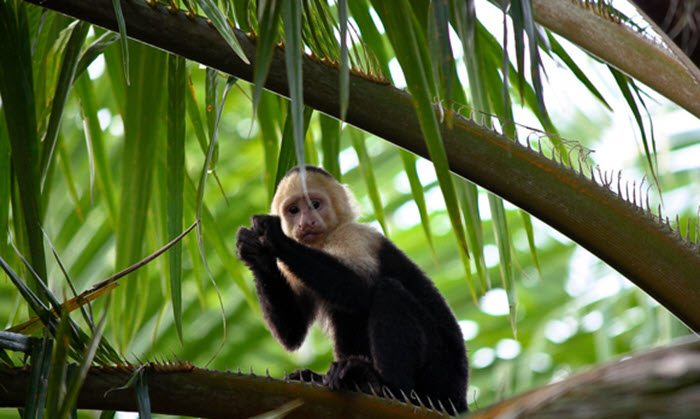Rose Spiks writes in Skift Global Forumof Costa Ricas efforts, one we should take note of.
Costa Rica has long been associated with ecotourism. But now that the rest of the world is catching up, it is still intent on meeting the challenge of sustainability in newly innovative and ambitious ways.
Costa Rica has long been a destination associated with ecotourism. Way back in 1997 — long before courting travelers with sustainability was a mainstream destination marketing tactic — the country established its Certificate of Sustainable Tourism program (CST) to encourage and assist the country’s tourism providers in committing to sustainable business practices. The program is regarded as the first of its kind in a developing nation.
Just over 20 years later, when the María Amalia Revelo took over as the country’s minister of tourism, she upped the ante further, providing stricter standards and guidelines concerning waste management as well as social and community interactions. Today 400 tourism companies in the country are certified on an opt-in basis, and the program has been the subject of academic study.
Indeed, sustainable tourism has long been a point of pride for the Costa Rican government, which is in part why Revelo’s job of heading the Costa Rican Tourism Board (ICT) is a more influential one than in many Latin American countries. Costa Rica has met the challenge of creating a sustainable tourism economy largely through an approach of public private partnerships. Though this model has its detractors, the country has been notably successful at protecting its vast wild areas from unchecked luxury developments while still stoking tourism demand and maintaining its status as one of the earth’s most biodiverse regions.
As sustainable tourism shifts from a niche concern to a front-and-center focus for tourism boards all over the world, Costa Rica seems keen to stay ahead of the pack. It announced a decarbonization plan earlier this year, aiming for a carbon-free tourism industry by 2050. In addition, it has put a renewed focus on traveler safety to counter perceptions that Costa Rica can be unsafe for tourists.
Revelo will be speaking at Skift Global Forum in New York City on September 18.
Skift Editor’s Note: This interview has been edited and condensed for clarity and length.
Skift: Costa Rica recently made a big push to raise awareness around tourism safety. Can you explain why that’s a renewed focus for the ICT?
María Amalia Revelo: Tourist safety has always been a priority for Costa Rica, but with the increase in the number of visitors to the country and growth of the tourism industry as a whole, we have taken another look at our safety and security measures to determine what can be changed and strengthened. In the past year, the Costa Rica Tourism Institute has assigned 3,500 people to work on security measures in the private sector, set up videos in airport waiting areas that prepare visitors to safely navigate the destination, improved lifeguard programs at turbulent beaches, issued stricter regulations around the certification of rafting guides, and launched a 24-hour chatbot on the Visit Costa Rica website to aid visitors with tourism and safety questions, as well as several safety mobile applications.
Skift: Sustainability is a big part of your mission as minister of tourism. What’s an initiative you’re particularly passionate about lately?
Revelo: There are many initiatives around sustainability that I am passionate about, but one in particular is our National Decarbonization Plan, which Costa Rica announced earlier this year. The plan outlines four focus areas — transportation, industry, waste management, and agriculture — which are key to reversing the increase of greenhouse gas emissions and that will encourage the modernization and revitalization of a green economy. In creating this plan, we evaluated all scenarios and possible trajectories to reach our goal of achieving complete decarbonization by 2050 in the most cost-effective manner. One of the most incredible transformations will be the development of an electric train that will provide the population with a modern public transportation system that connects the country’s four provinces.
Skift: Another part of your mission is to develop newer, smaller destinations in Costa Rica for travelers to visit. Can you say a little bit about the challenges in doing that?
Revelo: Costa Rica is a small country with a natural richness that allows for diverse experiences 365 days of the year. Last year, we launched a program to strengthen the distribution around the country of natural and cultural attractions that contribute to the broad authenticity of Costa Rica as a tourism destination and the equally broad distribution of the tourism infrastructure.
The challenge is strengthening tourism services and products around the country without harming our authenticity, the local communities, and the natural surroundings. As facilitators of the program, the Costa Rica Tourism Institute identifies obstacles to tourism development and the most appropriate solutions for each region, in partnership with the public and private sector. The program will attend to at least 12 of the 32 Tourism Development Centers around the country during my tenure with the goal of diversifying our tourism products and therefore combating overtourism.
Skift: We recently published a column about how certain countries’ tourism industries can suffer from negative headlines more than others (for example, the recent deaths in the Dominican Republic versus gun violence in the U.S.). Do you feel this dynamic play out in Costa Rica at all?
Revelo: We want to remain as transparent as possible with our citizens and visitors, and while recent headlines have called into question the safety of traveling to Costa Rica, our country continues to be a safe place. What people do not read about in the news are all of the safety and security measures we have established and how we are constantly evaluating and improving upon them. Bad things happen in every part of the world, but it is our job to ensure the safety of our citizens and visitors.

